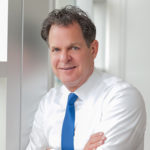People want to trust anyone they do business with. Few business leaders know that better than Joanne Moretti, dean of HP Sales University, a multimillion-dollar training facility for Hewlett-Packard sales professionals. Moretti is an award-winning senior executive with more than 30 years of sales experience and expertise.
Tony Jeary: What are some best practices you’ve discovered from working with all the groups at HP Sales University?
Joanne Moretti: There are a few critical things you must do. First, do what you say you’re going to do. That’s the only way to build trust. Promises made, promises kept. Establishing trust also means putting the customers’ interests first, not having your own agendas. You are the customers’ advocate inside your organization, and you can’t serve them if you’re not looking out for their interests.
You also build trust by putting in the time and being there for both good times and bad times. Make yourself available. Be visible. Participate in projects and planning meetings as a strategic partner. Be so integrated into their culture they wouldn’t think about planning without you. Customers want to know you’re strategically aligned with their vision and goals and truly understand their needs.
Another thing is relevance. Is what you’re doing as a company relevant to what your customer is doing? And it’s not good enough to just be relevant, it’s important to show them exactly how you’re relevant in their speak, not your own company jargon. They need to believe you know what’s important to them. Then, going beyond your current relevance, be innovative in a timely fashion for new solutions. Having a trusted relationship means being credible and relevant, and providing timely solutions to your customer.
Finally, it’s important to follow up on an ongoing basis to make sure your customers’ needs are still being met. It’s difficult to know if you’re meeting your customers’ needs if they don’t hear from you.
TJ: How do you measure whether you have your customers’ trust?
JM: By having first access to project requirements. By how much the customer shares with you in terms of some of their projects. When they bring you to board meetings or executive meetings to present a solution or thought leadership, you know you have high trust. And if your sponsor allows you to venture into the organization and doesn’t gate-keep you, you know you have trust. Let me give you an example from my own experience.
In 1998 I was leading a sales team for a major insurance company in Canada. We were showing our solutions to help a customer overcome Y2K concerns and transitions. It was a very large seven-figure, almost eight-figure deal. The chief information officer trusted me and my team so much that we were asked to present to the board about why it was critical to make a financial investment. And we won that deal.
We talked about all the risks associated with the old systems that were not Y2K-ready and how we would overcome those challenges. We didn’t talk in technical jargon. We talked in business terms about the financial impact and the risks to their business, and they gave us the green light. The CEO actually signed our contract at that board meeting.
The way you establish trust is not always pushing products, features and benefits. It is talking about how solutions can drive up revenue, drive down costs, and maybe even create liquidity and cash flow. Talk about how your solution might help lessen customer turnover, increase web hits and web revenues, and help analyze information to make better business decisions.
You’ve got to talk to them in business terms about business issues. The technical stuff will come, but first you have to talk about what’s important to them, not you. Think about the customer first, and the commissions follow. If you’re focused on commissions, you will absolutely fail.
TJ: Do you have any case studies where you’ve had to do damage control when trust was temporarily lost and then regained? How did you make that happen?
JM: Yes. We totally messed up with a customer at a large bank when we sold them a bill of goods—the products didn’t work. We regained faith by giving them their money back quickly. We recognized our solution would not work, and we stood up and took responsibility for our mistake and gave them all their money back. We didn’t give a credit toward something else and try and fix it. And we took action quickly. After that, they continued to buy from us.
TJ: What other things are important for developing a stellar reputation with customers?
JM: When you’re asked by a customer to do something, don’t wait to get back to the office. Respond to them in less than an hour. Get on your cellphone wherever you are and make contact or make sure someone else does.
I have a personal model for service excellence. It is for my customers, my co-workers and partners alike. It is the 30/30/EOD rule. If you email and I’m online, I respond within 30 seconds. If you call or email and I’m in a meeting, I will respond within 30 minutes. If I’m in a class [at HP Sales University], I will respond by the end of the day.
Everyone is important to your success, not just your customers. Manage down, manage to the middle and manage up the same way you do with your customers.
Bottom line: Be at people’s service. If you are of service to people, that’s how you win people.
Tony’s Top VIP’s (Very Important Points)
- Give extra value. Do more than is expected.
- You are your customers’ advocate inside your organization, and you can’t serve them if you’re not looking out for their interests. Place the customers’ best interests before your own.
- Communicate with customers in their language, not in your company’s jargon.
- The way you establish trust is not always pushing products, features and benefits. It is talking about how solutions can drive up revenue, drive down costs and maybe even create liquidity and cash flow.
- Promises made, promises kept.
- Bottom line: Be at people’s service.
Editor’s note: After working with SUCCESS editors on this article, Moretti left HP to become vice president of global software operations at Dell.











